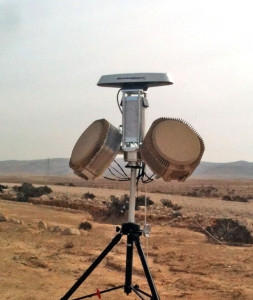

A new radar designed to improve force protection for forward deployed units and forward operating bases (FOB) was recently tested in Israel by RADA Electronic Industries. The Multi-Mission Hemispheric Radar (MHR) with the RPS-40 Counter-Artillery, Rockets and Mortars (C-RAM) mission.Defense-Update reports
Mortar and rocket attacks could prove highly lethal against exposed military units, forward operating bases (FOB) or civilian targets. Early warning providing personnel to take cover and military forces to employ countermeasures would significantly increase survivability rate.
During the testing the radar detected multiple mortars and rockets fired within the radar’s area of coverage. The system detected the threats at a very early stage and provided exceptionally long alert times, while demonstrating no false alarms. According to RADA, the new radar provides tactical accuracies of the Point of Origin (POO) and the Point of Impact (POI), enabling effective employment of selective warning, countermeasures and counterfire.
The RPS-40 detects, tracks, classifies and locates direct fire and ballistic (elevated) threats fired at stationary or mobile forces; such threats include rockets, artillery, mortars, ATGMs, RPGs, and more. The system can be integrated with any protection and/or C4I system and can be installed at stationary bases and posts, or onboard fighting vehicles.
The test was observed by representatives from the Israel Defense Forces (IDF) and the defense industry. “Our next goal is to establish the serial production line by mid-2013.” Zvi Alon, RADA’s Chief Executive Officer commented, adding that further tests are planned for the coming months, to validate the system’s performance on additional operational missions. Alon expects that by the end of 2013 RADA’s radars will be installed and in use by select customers.
Source: Defense-Update
















